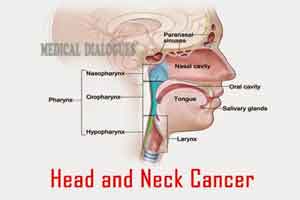- Home
- Editorial
- News
- Practice Guidelines
- Anesthesiology Guidelines
- Cancer Guidelines
- Cardiac Sciences Guidelines
- Critical Care Guidelines
- Dentistry Guidelines
- Dermatology Guidelines
- Diabetes and Endo Guidelines
- Diagnostics Guidelines
- ENT Guidelines
- Featured Practice Guidelines
- Gastroenterology Guidelines
- Geriatrics Guidelines
- Medicine Guidelines
- Nephrology Guidelines
- Neurosciences Guidelines
- Obs and Gynae Guidelines
- Ophthalmology Guidelines
- Orthopaedics Guidelines
- Paediatrics Guidelines
- Psychiatry Guidelines
- Pulmonology Guidelines
- Radiology Guidelines
- Surgery Guidelines
- Urology Guidelines
Clinical Practice Guideline: Evaluation of the Neck Mass in Adults

A neck mass is defined as an abnormal lesion (congenital or acquired) that is visible, palpable or seen in an imaging study. The guideline development group (GDG) further qualified neck masses as any mass below the mandible, above the clavicle, and deep to the skin, although it may involve the overlying skin secondarily.
The aim of this guideline is to promote efficient, effective, and accurate diagnostic workup of neck masses to ensure that adults with potentially malignant disease receive prompt diagnosis and intervention to optimize outcomes.The target patient for this guideline is anyone >18 years old with a neck mass. The target clinician for this guideline is anyone who may be the first clinician whom a patient with a neck mass encounters.This guideline was published as a supplement in the September 2017 issue of Otolaryngology-Head and Neck Surgery.
- Neck masses may develop from infectious, inflammatory, congenital, traumatic, benign, or malignant neoplastic processes.
- An asymptomatic neck mass may be the initial or only clinically apparent manifestation of head and neck cancer, such as squamous cell carcinoma (HNSCC), lymphoma, or thyroid or salivary gland cancer.
- A neck mass in the adult patient should be considered malignant until proven otherwise.
- Timely diagnosis of a neck mass due to metastatic HNSCC is paramount because delayed diagnosis directly affects tumor stage and worsens prognosis.
Salient points of Guidelines:
- AVOIDANCE OF ANTIBIOTIC THERAPY: Clinicians should not routinely prescribe antibiotic therapy for patients with a neck mass unless there are signs and symptoms of bacterial infection.
- (a)STAND-ALONE SUSPICIOUS HISTORY: Clinicians should identify patients with a neck mass who are at increased risk for malignancy when the patient lacks a history of infectious etiology and the mass has been present for ≥2 weeks without significant fluctuation, or the mass is of uncertain duration.2(b)STAND-ALONE SUSPICIOUS PHYSICAL EXAMINATION: Clinicians should identify patients with a neck mass who are at increased risk for malignancy based on ≥1 of these physical examination characteristics: fixation to adjacent tissues, firm consistency, size >1.5 cm, and/or ulceration of overlying skin
- ADDITIONAL SUSPICIOUS SIGNS AND SYMPTOMS: Clinicians should conduct an initial history and physical examination for all adults with a neck mass to identify those patients with an increased risk of malignancy. FOLLOW-UP OF PATIENT NOT AT INCREASED RISK: For patients with a neck mass who are not at increased risk for malignancy, clinicians or their designees should advise patients of criteria that would trigger the need for additional evaluation. Clinicians or their designees should also document a plan for the follow-up to assess resolution or final diagnosis.
- PATIENT EDUCATION: For patients with a neck mass who are deemed at increased risk for malignancy, clinicians or their designees should explain to the patient the significance of being at increased risk and explain any recommended diagnostic tests.
- TARGETED PHYSICAL EXAMINATION: Clinicians should perform, or refer the patient to a clinician who can perform, a targeted physical examination (including visualizing the mucosa of the larynx, base of tongue, and pharynx) for patients with a neck mass deemed at increased risk for malignancy.
- IMAGING: Clinicians should order neck computed tomography (CT; or magnetic resonance imaging [MRI]) with contrast for patients with a neck mass deemed at increased risk for malignancy.
- FINE-NEEDLE ASPIRATION: Clinicians should perform FNA instead of open biopsy, or refer the patient to someone who can perform FNA, for patients with a neck mass deemed at increased risk for malignancy when the diagnosis of the neck mass remains uncertain.
- CYSTIC MASSES: For patients with a neck mass deemed at increased risk for malignancy, clinicians should continue evaluation of patients with a cystic neck mass, as determined by FNA or imaging studies, until a diagnosis is obtained and should not assume that the mass is benign.
- ANCILLARY TESTS: Clinicians should obtain additional ancillary tests based on the patient’s history and physical examination when a patient with a neck mass is at increased risk for malignancy and/or does not have a diagnosis after FNA and imaging.
- EXAMINATION UNDER ANESTHESIA OF THE UPPER AERODIGESTIVE TRACT BEFORE OPEN BIOPSY:Clinicians should recommend examination of the upper aerodigestive tract under anesthesia, before open biopsy, for patients with a neck mass who are at increased risk for malignancy and without a diagnosis or primary site identified, with FNA, imaging, and/or ancillary tests.
For more details click on the link: https://doi.org/10.1177/0194599817722550

Disclaimer: This site is primarily intended for healthcare professionals. Any content/information on this website does not replace the advice of medical and/or health professionals and should not be construed as medical/diagnostic advice/endorsement or prescription. Use of this site is subject to our terms of use, privacy policy, advertisement policy. © 2020 Minerva Medical Treatment Pvt Ltd